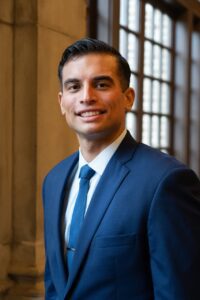Growing up, my parents constantly told me that I needed to work hard in school so that I could go to college. I knew what college was in the theoretical sense – a place you go to study after high school so you can get a better job – but didn’t know much else about it. It wasn’t until the 10th grade that I was finally able to grasp what it meant, when I connected with diverse role models.
During high school, David Villa was (and still is) one of my best friends, and he was a huge role model for me. When I was a sophomore in high school, he was a senior going through the application process. I saw the work he put in to polish his applications, the anxiety he felt while awaiting responses, and the elation he experienced when the acceptance letters started rolling in. When he finally decided on attending Harvard University, something clicked in my brain.
Diverse Role Models Made a Difference For Me
This was the moment that college become a realistic goal for me, not because of any brochures I may have received, but because somebody like me was headed to a place I’d only heard referenced in fictional TV shows and movies – Harvard University. I heard the message loud and clear. Like me, David performed well in high school. Like me, David was a Latino Male. And like me, David’s parents were immigrants to this country. Not only did I have a shot of getting into a good college, but I could realistically aim for Harvard University.
That is the true power of having a role model. It can change the entire trajectory of an individual’s life. In my case, I wouldn’t be able to call myself a Harvard graduate if it wasn’t for David Villa.
Sourcing Diverse Role Models for Students
Can we guarantee that every student has a role model that impacts them how David impacted me? No. BUT we can stack the deck in their favor. Here are a few ways on how to do that.
Promote diverse hiring practices
Our students need access both to people who share their backgrounds and those who don’t.
Encourage peer-to-peer mentorship
Some of the greatest growth I’ve seen in students has come as a result of positive peer influences.
Encourage positive staff and student relationships
Our staff have the ability to impact our students in ways that extend outside of the content they teach.
Bring in outside speakers/guests
There are so many people in the workforce outside of education who’d love to give back to students.
Diverse Role Models Make a Difference
The power of a role model is unfathomable! Our students look to others to see what they can become. Our students need to see that their backgrounds aren’t impediments to their success. Sometimes, it isn’t enough to tell them this message. They need to hear it from people who’ve been through it themselves, whether it be from another student, staff member, or outside mentor.
I can only hope that each one of my students has a “David” in their lives who can show them that certain dreams can become realities.
(Big Shout Out to EMERGE, SWAG to College and The College Initiative! They are amazing organizations who do a ton of work to provide positive role models for thousands of students in underserved communities!)
This is Part TWO in a series. Check out Part One here.



